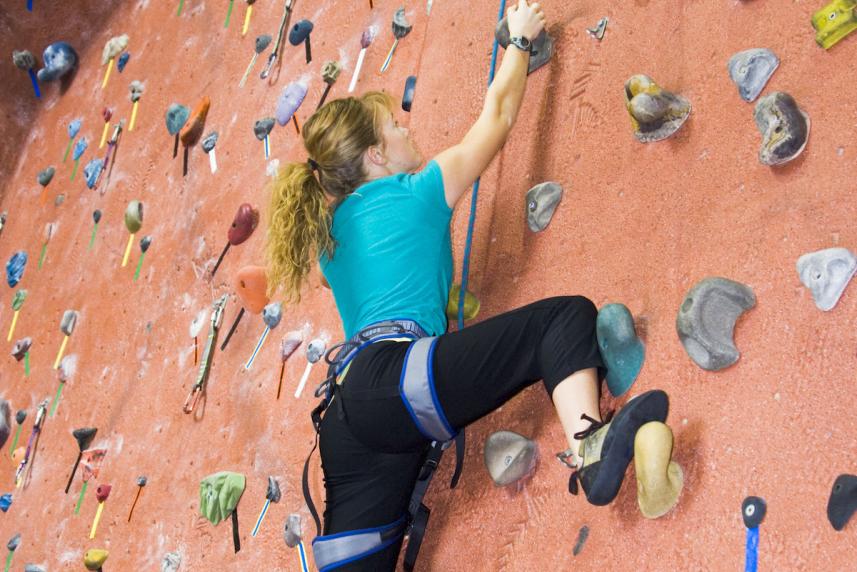Five tips for indoor rock climbing
Start your ascent with our advice for beginners.

We all work out on the ground, but maybe it's time to look up for inspiration. No, we don't mean skydiving (although that's also fun!). We're talking about land exercise that's vertically minded: indoor rock climbing.
A good way to get a taste of the outdoors inside, rain or shine, indoor rock climbing will appeal to your adventurous side—and give you a fitness boost. "Rock climbing is a great total-body exercise that works strength, flexibility, endurance, and balance," says Robert Forster, physical therapist and founder of Forster Physical Therapy in Santa Monica, CA. He's also been an avid climber since the '90s.
Ready to scale some walls? Follow Forster's beginner's tips to get started.
Prime Your Legs and Core
It may seem like rock climbing is all about upper-body might, but you'll need more than that for climbs. "Too much emphasis is placed on arm strength, which is not really where climbing power comes from," Forster says. Before you take on a wall, work on your leg and core strength and flexibility. Try squats for your lower body and sit-ups for your abs and back.
Check Out the Facility
When you're scoping out a rock climbing facility, take a look at the equipment. Make sure the cables, ropes, and walls are clean. "Skin abrasions [are a] part of the learning curve for this sport, and unclean facilities hold a great potential for staph and other infections,” Forster says. And when you're halfway up a cliff, man-made or not, you don't want to be worried about getting an infection.
Dress Right and Gear Up
Climbers should wear loose, comfortable clothing, and most indoor facilities will rent out cables and harnesses, Forster says. But if you get serious about the sport, he also recommends getting specialized climbing shoes, which are usually a half-size smaller than standard athletic shoes and have soft, flexible rubber soles for gripping footholds.
Master the Basics
"Rock climbing is a very technical sport and [can be] dangerous," Forster says. "Technique is paramount." It's critical to learn how to do things correctly from the outset to minimize the risk of falls, sprains, and other injuries. Look for instructors at your local facility to teach you solid basics.
Take Your Time
While some people may think they'll take to the wall like Spider-Man, Forster advises beginners not to aim for speed. Scrambling up a wall with reckless abandon can prove to be dangerous for the inexperienced. Instead, stay very present and focused on the wall—plus, part of the fun is figuring out what your next move will be.
Talk to your doctor before beginning a new exercise program.


